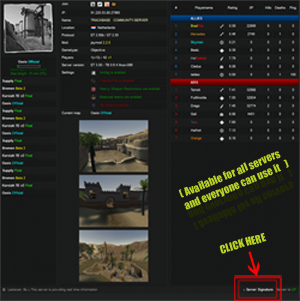emsm-gh1-uea10.nsa.gov
C=USO=U.S. GovernmentOU=DoDPKINSA/CSSCN=emsm-gh1-uea10.nsa.gov
Fingerprints:
d9fcc417c2
- Issuer:
-
DOD ID SW CA-37
- Serial:
-
12177
- Not valid before:
-
2016-04-12 14:40:26 UTC
- Not valid after:
-
2019-04-13 14:40:26 UTC
- Key size:
-
2048
- Signature Algorithm:
-
sha256WithRSAEncryption
- authorityKeyIdentifier:
-
keyid:16:24:7E:F7:2D:C1:EF:92:3F:BE:44:E7:54:5E:E9:FE:17:BA:F3:A1
- subjectKeyIdentifier:
-
53:D9:A5:2D:B9:AC:82:A0:F3:12:59:BE:C5:5B:A9:63:D6:81:83:25
- authorityInfoAccess:
-
CA Issuers - URI:http://crl.disa.mil/sign/DODIDSWCA_37.cerOCSP - URI:http://ocsp.disa.mil
- keyUsage:
-
Digital Signature, Key Encipherment
- crlDistributionPoints:
-
Full Name: URI:http://crl.disa.mil/crl/DODIDSWCA_37.crl
- subjectAltName:
-
DNS:emsm-gh1-uea10.nsa.gov
- certificatePolicies:
-
Policy: 2.16.840.1.101.2.1.11.39
- extendedKeyUsage:
-
TLS Web Server Authentication, TLS Web Client Authentication, 1.3.6.1.5.5.8.2.2
Certificates
| Fingerprint | Issuer | Serial | Public Key | Download | Tools | |
|---|---|---|---|---|---|---|
| d9fcc417c29a037dac90aea5f178e91d59ec9862 | DOD ID SW CA-37 | 12177 | d9fcc417c2 |
| ||



 )
from a set of documented source files. There is also support for
generating output in RTF (MS-Word), PostScript, hyperlinked PDF,
compressed HTML, and Unix man pages. The documentation is extracted
directly from the sources, which makes it much easier to keep the
documentation consistent with the source code.
)
from a set of documented source files. There is also support for
generating output in RTF (MS-Word), PostScript, hyperlinked PDF,
compressed HTML, and Unix man pages. The documentation is extracted
directly from the sources, which makes it much easier to keep the
documentation consistent with the source code. .png)